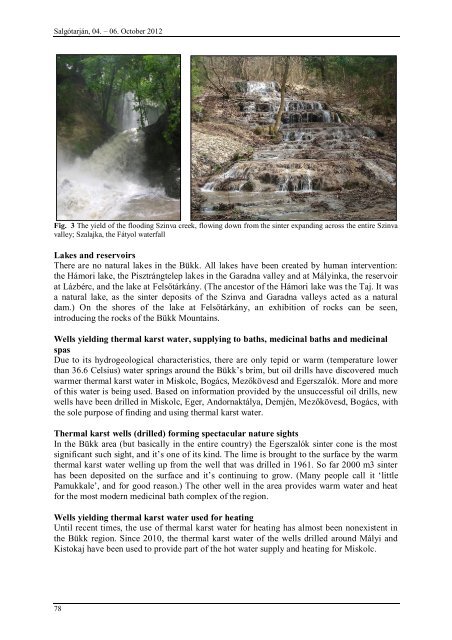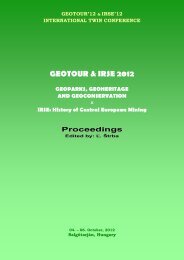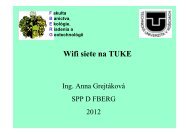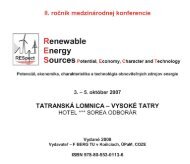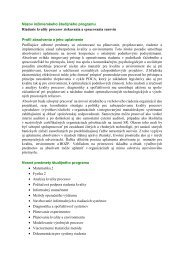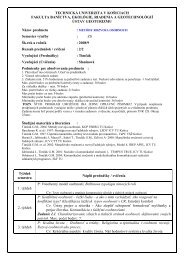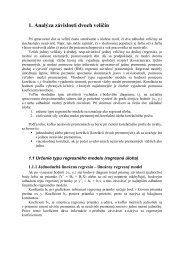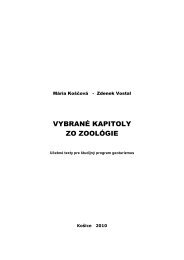GEOTOUR & IRSE 2012.pdf - Fakulta BERG - TUKE
GEOTOUR & IRSE 2012.pdf - Fakulta BERG - TUKE
GEOTOUR & IRSE 2012.pdf - Fakulta BERG - TUKE
You also want an ePaper? Increase the reach of your titles
YUMPU automatically turns print PDFs into web optimized ePapers that Google loves.
Salgótarján, 04. – 06. October 2012<br />
Fig. 3 The yield of the flooding Szinva creek, flowing down from the sinter expanding across the entire Szinva<br />
valley; Szalajka, the Fátyol waterfall<br />
Lakes and reservoirs<br />
There are no natural lakes in the Bükk. All lakes have been created by human intervention:<br />
the Hámori lake, the Pisztrángtelep lakes in the Garadna valley and at Mályinka, the reservoir<br />
at Lázbérc, and the lake at Felsőtárkány. (The ancestor of the Hámori lake was the Taj. It was<br />
a natural lake, as the sinter deposits of the Szinva and Garadna valleys acted as a natural<br />
dam.) On the shores of the lake at Felsőtárkány, an exhibition of rocks can be seen,<br />
introducing the rocks of the Bükk Mountains.<br />
Wells yielding thermal karst water, supplying to baths, medicinal baths and medicinal<br />
spas<br />
Due to its hydrogeological characteristics, there are only tepid or warm (temperature lower<br />
than 36.6 Celsius) water springs around the Bükk‟s brim, but oil drills have discovered much<br />
warmer thermal karst water in Miskolc, Bogács, Mezőkövesd and Egerszalók. More and more<br />
of this water is being used. Based on information provided by the unsuccessful oil drills, new<br />
wells have been drilled in Miskolc, Eger, Andornaktálya, Demjén, Mezőkövesd, Bogács, with<br />
the sole purpose of finding and using thermal karst water.<br />
Thermal karst wells (drilled) forming spectacular nature sights<br />
In the Bükk area (but basically in the entire country) the Egerszalók sinter cone is the most<br />
significant such sight, and it‟s one of its kind. The lime is brought to the surface by the warm<br />
thermal karst water welling up from the well that was drilled in 1961. So far 2000 m3 sinter<br />
has been deposited on the surface and it‟s continuing to grow. (Many people call it „little<br />
Pamukkale‟, and for good reason.) The other well in the area provides warm water and heat<br />
for the most modern medicinal bath complex of the region.<br />
Wells yielding thermal karst water used for heating<br />
Until recent times, the use of thermal karst water for heating has almost been nonexistent in<br />
the Bükk region. Since 2010, the thermal karst water of the wells drilled around Mályi and<br />
Kistokaj have been used to provide part of the hot water supply and heating for Miskolc.<br />
78


